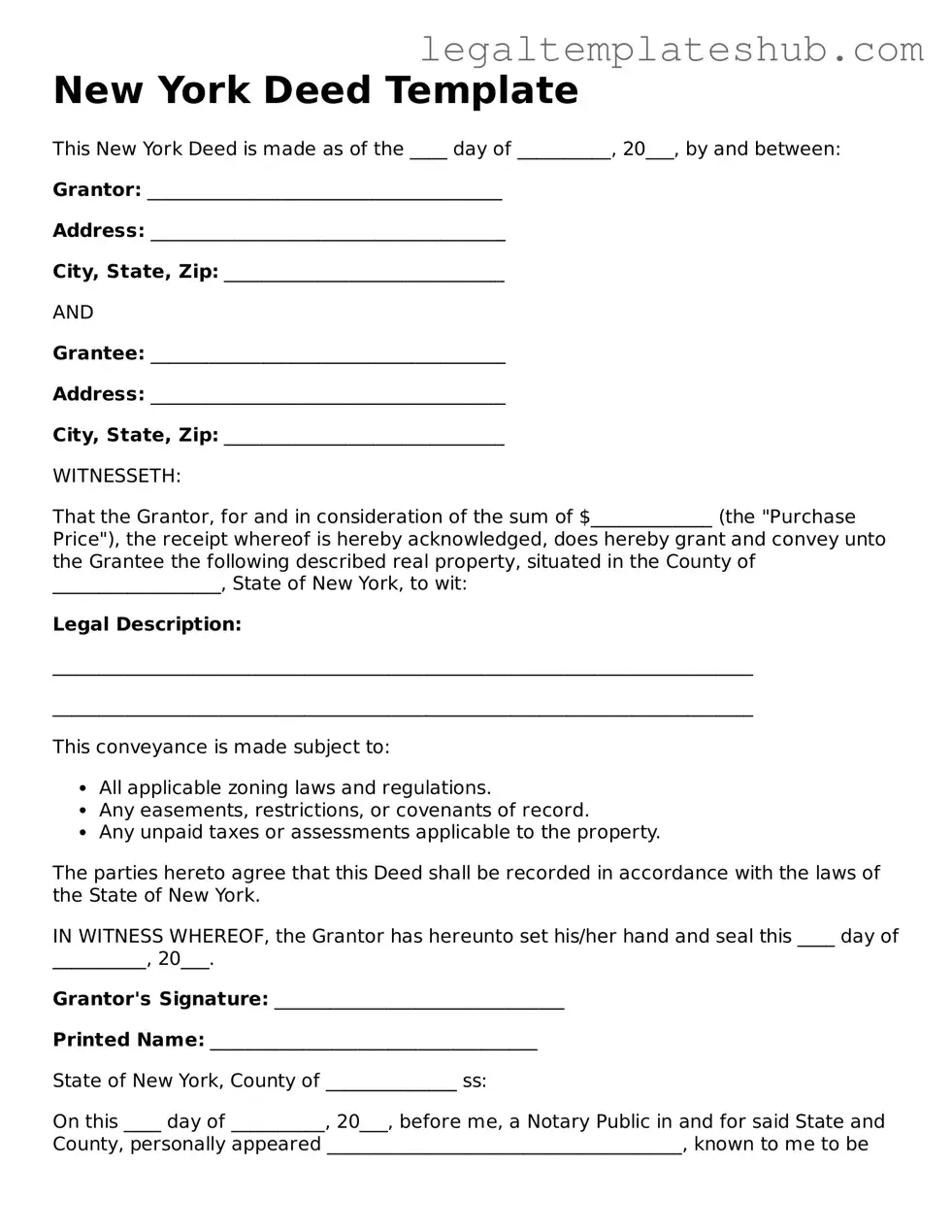Printable Deed Document for New York
A New York Deed form is a legal document used to transfer ownership of real property from one party to another. This form ensures that the transfer is recorded and recognized by the state, providing clarity and security in property transactions. To get started with your property transfer, fill out the form by clicking the button below.
Access Editor
